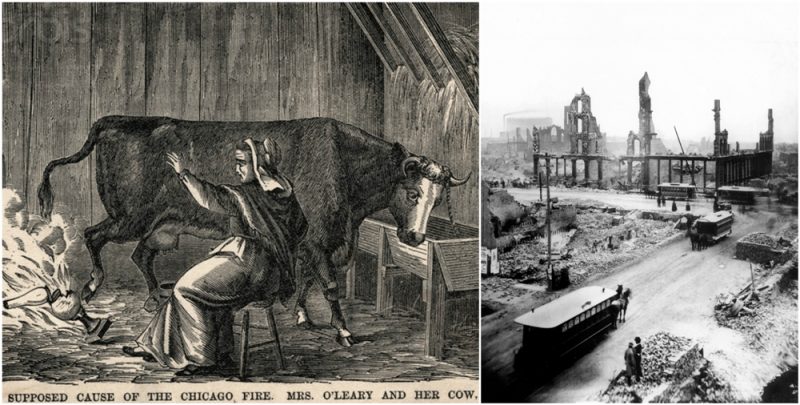A large and destructive fire swept Chicago in 1871 that became known as the Great Chicago fire, lasted for two days, from October 8 to October 10.
The conflagration destroyed 3.3 square miles of Chicago, took over 300 lives and left over 100,000 residents homeless.
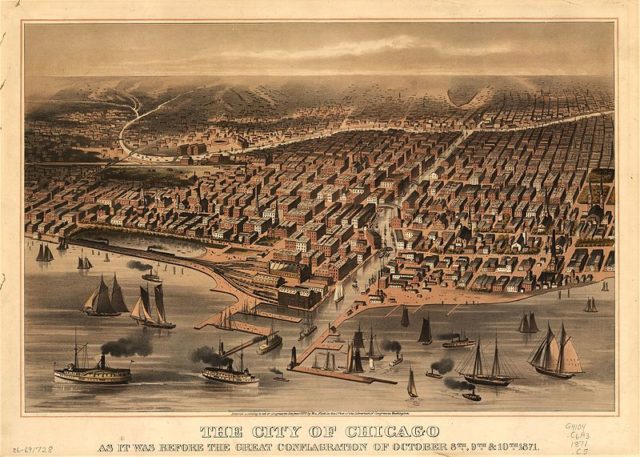
More than two-thirds of Chicago’s structures were made out of wood at that time. The houses’ roofs were highly flammable and the city sidewalks were also made of wood which contributed in easily spreading of the blaze.
The fire started around 9 pm on Sunday, in or around a small barn that belonged to the O’Leary family.
Although the shack next to the barn was the first object consumed by the fire, the authorities never found out the exact reason that caused the fire.
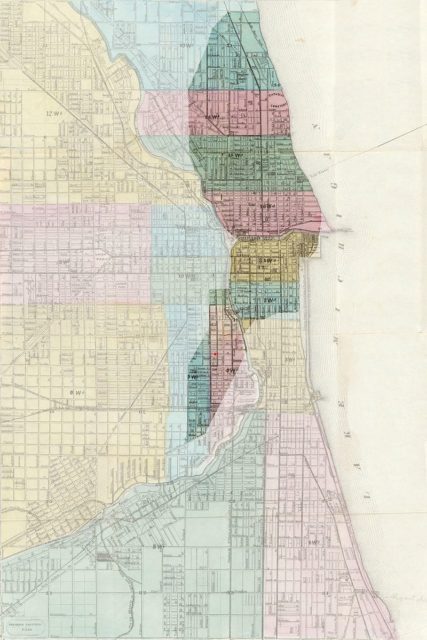
The Chicago Fire Department had 185 firefighters with only 17 horse-drawn steam engines to save the entire city, which seemed impossible because the fire was spreading very fast.
What made the situation worse was the watchman’s mistake: he sent the firefighters to the wrong place and allowed the fire to grow unobserved.
When the firefighters finally arrived at the source of the fire, it had swept the whole neighborhood. It was progressing towards the central business district, causing panic among people as they realized that the fire was moving rapidly towards the heart of the city.
Two hours after the conflagration started, Major Rosewell Mason started asking for help from other nearby cities. Although the firefighters intervened, due to city’s empty water mines the situation became hopeless and the city was burned to the ground.
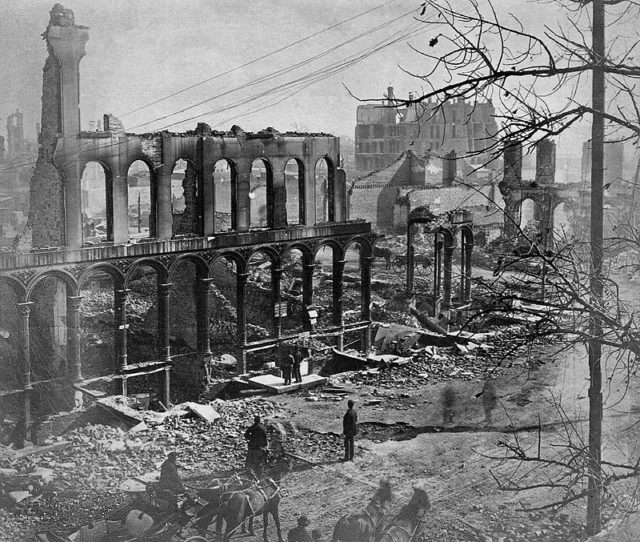
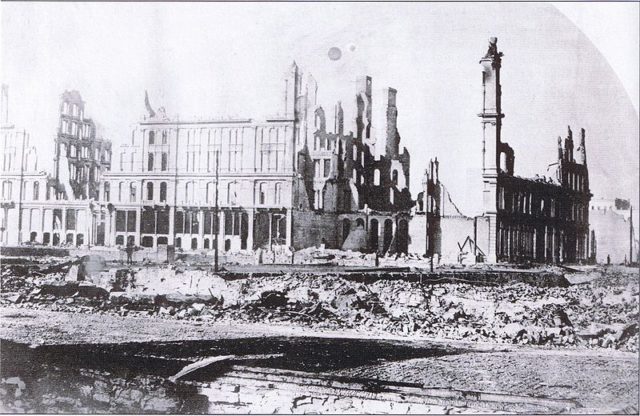
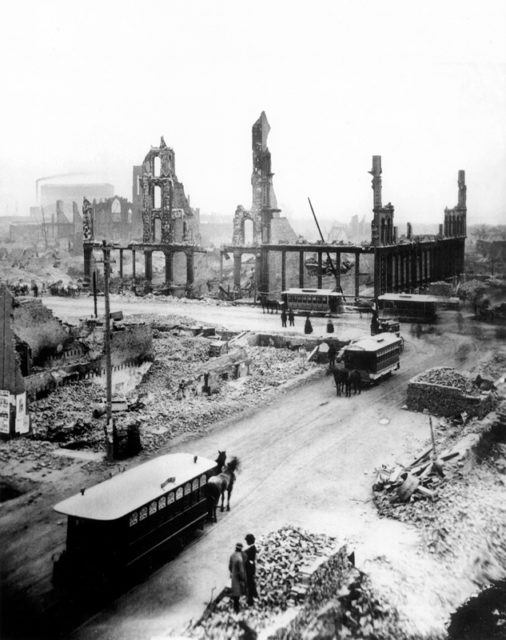
Only a few structures survived the blaze, such as the Chicago Water Tower, the Police Constable Bellinger’s cottage, Chicago Avenue Pumping Station, a church and one high school. When the fire finally burnt itself out, rain fell late in the night on October 9.
After the fire, Chicago received monetary donations, such as food and clothing from around the country and abroad. The city’s fire standards were rewritten almost immediately and soon Chicago developed one of the country’s leading fire-fighting forces.
Although the cause of the fire was never determined, a few legends grew about a probable culprit and circled around the city.
The most famous and durable one has it that a cow belonging to the O’Leary family was responsible for the disastrous conflagration.
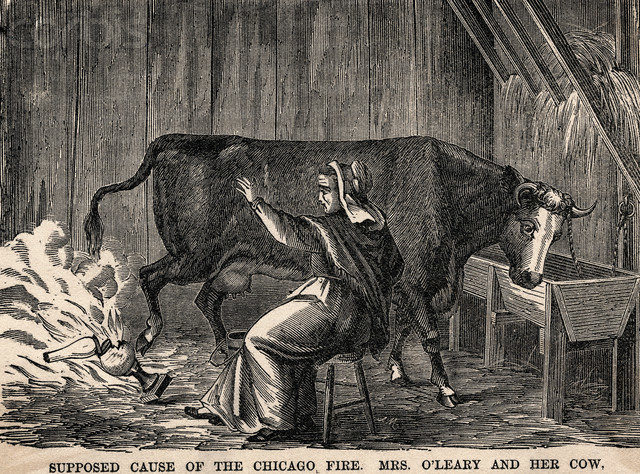
Apparently, the cow kicked a lantern or an oil lamp and set the barn on fire. The O’Leary family denied this story but nobody believed them, considering the fact that their property was the fire’s starting point.
O’Learys were never charged with starting the fire, but due to the many accusations, Chicago’s city council officially exonerated them and the cow in 1997.
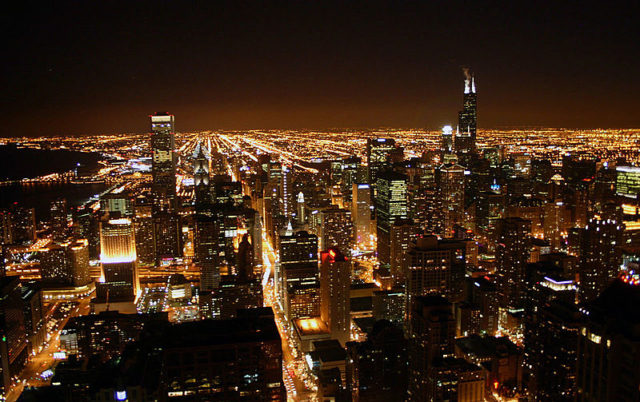
Undoubtedly, the Chicago fire was one of the biggest disasters that America suffered during the 19th century.
Despite the disaster, like a Phoenix, the beautiful city has risen from the ashes and was rebuilt again over the years.
